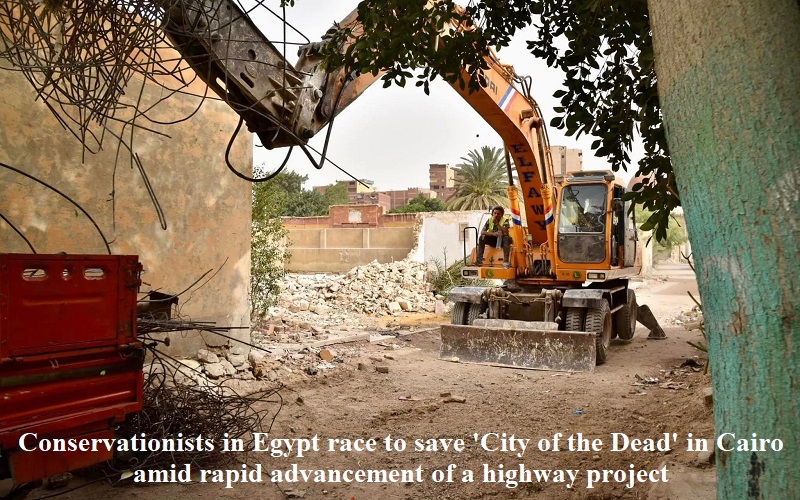
Conservationists in Egypt are in a race against time to rescue ancient artifacts that are buried in parts of Cairo that are being affected by a rapid highway project.
The highway project is part of President Abdel Fattah El-Sisi’s modernization efforts, and it involves digging through a 7 km-long UNESCO World Heritage site known as the ‘City of the Dead’. This site is a historic area containing mausoleums dating back to the seventh century and is considered culturally significant.
The construction of the roads for the highway project is reportedly cutting through the network of mausoleums, aiming to connect central Cairo with Egypt’s ‘New Administrative Capital’, which has been congested.
Amidst the urgency to preserve remnants of ancient history amidst the rubble, groups of amateur historians and volunteers are uncovering artifacts that date back over a thousand years.
One of the recent discoveries includes an ancient Kufi Arabic engraving that was partially embedded in concrete and buried among fallen stonework. The tombstone bears an inscription from 836 AD and has been donated to the Ministry of Tourism and local museums.
Members of the group involved in the rescue efforts, such as Mostafa El Sadek, have expressed concerns about the destruction of many monuments and the removal of burials they witness daily.
The original mausoleum had been previously demolished to make way for a new one, and its tombstone was repurposed as a brick. Just as the newer mausoleum was being demolished, Dr. El Sadek stumbled upon it.
According to Amin Murad, a cemetery guard, it is known that there is an older grave beneath the one that was discovered. As the bulldozers dig, these hidden relics are revealed.
While the government does not demolish registered antiquities under the Egyptian Antiquities Law, reports suggest that many of the antiquities in the City of the Dead are unregistered.
Although Egypt boasts a rich heritage with unparalleled ancient artifacts, the country is currently investing heavily in mega-infrastructure projects like highways, monorails, and the New Administrative Capital, which is a $58 billion project situated east of Cairo.

Post Your Comments